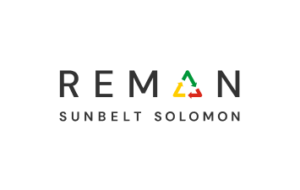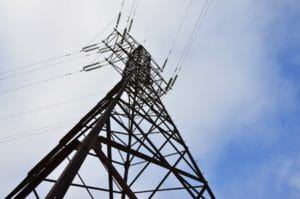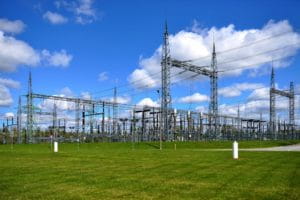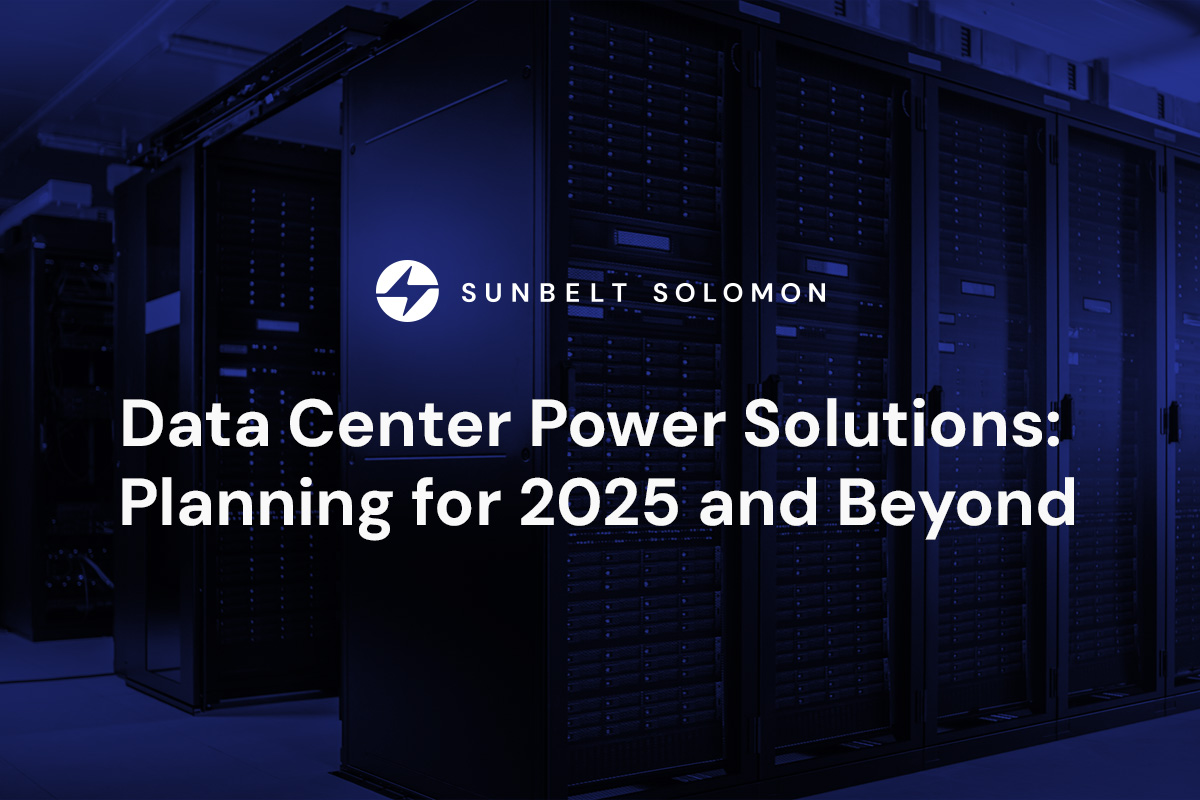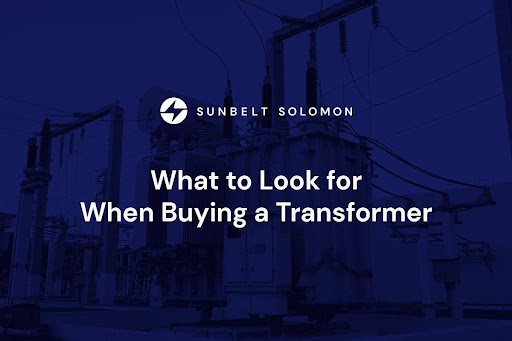
Choosing the right transformer is the key to providing your operation with reliable, efficient power. In the industrial and energy sectors, uptime is everything. Unscheduled downtime costs the largest 500 companies $1.4 trillion in annual revenue. If you want to drive productivity, it’s crucial to minimize downtime as much as possible.
A quality transformer can play a key role in ensuring consistent, reliable performance that protects your bottom line. When purchasing an electrical transformer, it’s essential to choose equipment that’s not just high quality, but also optimized for your specific operation. Our Transformer Buying Guide highlights the key features to consider, helping you invest in a cost-effective, reliable transformer tailored to your performance requirements.
-
Power Requirements
The first step in choosing the right transformer starts with understanding your system’s power requirements. A mismatch in voltage, capacity kVA, or frequency ratings can lead to wasted energy, costly rework, and even premature equipment failure.
Voltage and kVA Rating
An electrical transformer transfers energy between two or more cicruits through electromagnetic induction and is used to either step up or step down voltage levels. When purchasing a transformer, it’s important to ensure the voltage and kVA align with your system requirements. Step up transformers are commonly used in renewable energy applications to increase the voltage for transmission, while step down transformers are typically used to reduce high transmission voltages to the levels suitable for end users.
Always confirm your transformer’s:
- Voltage ratings: Make sure the transformer’s primary and secondary voltage ratings are compatible with primary power source and the secondary load. In applications prone to voltage fluctuations, consider purchasing transformers with taps. Tap settings allow for minor voltage adjustments, helping the transformer maintain stable performance within the safe voltage tolerance limits.
- kVA capacity: kVA determines how much load the transformer can handle safely. Undersizing can lead to overheating and premature transformer failure, while oversizing increases the transformer’s cost unnecessarily. However, if future load expansion is expected, slightly oversizing may be a better long term investment.
Sunbelt Solomon can help you find a transformer that can keep pace with your demands.
Load Demands
Every transformer has a load limit based on its kVA rating. kVA tells you how much power a transformer can deliver to its load safely. If your application involves fluctuating loads, or the possibility of running over transformer kVA for long periods, you might need a transformer with a higher kVA rating or one built to handle overloads. For steady, consistent loads, a standard transformer with the right kVA match will get the job done efficiently without overspending on extra capacity.
Harmonics can significantly affect transformer performance by causing additional losses and excessive heating, which shortens the transformer’s lifespan. In applications with high harmonic content such as data centers, renewable energy systems, or facilities using variable frequency drives, it is essential to choose a K-rated transformer. These transformers are specially designed to handle harmonic loads without compromising reliability or longevity.
Frequency and Phase Compatibility
Transformers are designed for specific frequencies, typically 50 Hz or 60 HZ. Using the incorrect frequency can lead to overheating, poor performance, or premature transformer failure. The United States grid uses 60Hz (110-120V), while other countries use 50Hz (220-240V). If you’re looking for transformers in the country you’re operating out of, most transformers should already match the correct frequency.
Transformers come in different phases. Single-phase transformers are ideal for residential loads, small commercial and industrial loads, and rural areas, where power demand is lower. On the other hand, three-phase transformers are more commonly used for industrial facilities, large commercial operations, and utility scale power applications, offering higher transformer capacity to handle higher power loads.
-
Transformer Efficiency
Efficiency is a critical part of transformer specifications. Efficiency directly impacts your long-term costs and savings. If you invest in a high-efficiency transformer, you cut wasted energy out, decreasing expenses. While transformers are designed to convert voltage efficiently, they still experience some energy loss. Understanding transformer efficiency ratings helps you get the most efficient transformer for your operation.
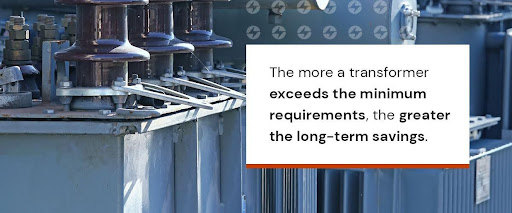
The U.S. Department of Energy has transformer efficiency standards. Use these regulations to see the minimum efficiency levels for distribution for your preferred options. Higher-efficiency transformers are more expensive upfront, but they reduce your overall energy losses and expenses. The more a transformer exceeds the minimum requirements, the greater the long-term savings.
-
Installation Needs
While power requirements play a major role when selecting a transformer, it’s equally important to consider the environmental conditions and installation setting. Installing transformers in an unsuitable environment can negatively affect its performance and shorten lifespan. Choosing the proper enclosure ratings and adequate cooling designs are critical steps to protect the transformer and ensuring long term operation.
Industry standards for enclosures follow ratings from the National Electrical Manufacturers Association (NEMA). They classify enclosures based on their ability to withstand specific conditions. NEMA 3R or NEMA 4 enclosures provide protection against water and contaminants for indoor and outdoor transformers. If your transformer sees minimal stressors, you might opt for a NEMA 1 enclosure. Pick an enclosure that will protect your transformer from the weather and contamination it will experience on the job.
Cooling
Effective transformer cooling is essential for maintaining performance and ensuring long term reliability. It prevents overheating and damage due to excess heat losses generated during transformer operation (load losses and core losses). Some transformers use natural air circulation while others use forced air cooling, which allows higher transformer load capacity. Whether you choose dry-type or liquid-filled transformer, make sure the transformer fits your application. Dry-type transformers are best for indoor use, while oil-filled transformers suit outdoor applications.
-
Core Material and Winding Configuration
The transformer’s core material and winding configuration will also influence performance. Compare these materials to find the best fit for your application.
Core Material
Transformer cores are made from laminated steel sheets, commonly referred to as laminated core steel. The type of core material plays a crucial role in the transformer’s overall efficiency, as it directly affects no-load losses (also known as core losses).
The most commonly used core steel material is grain-oriented steel, typically available in thickness ranging from 7 mm to 14 mm. Amorphous steel, with laminations as thin as 2 mm offers lower core losses by reducing eddy currents.
For high efficiency applications, amorphous steel may be a more suitable core material. However, it comes with higher upfront costs due to the premium material, increased labor intensity, and additional manufacturing steps required.
Winding Configuration
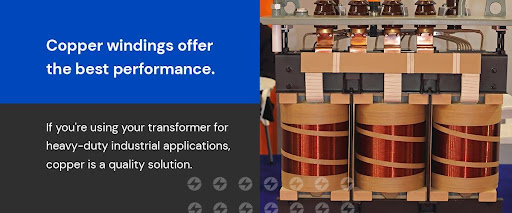
The majority of load losses are I2R losses which are resistive losses generated in the windings. These losses increase with the load, as higher current “I ” leads to greater heat dissipation. The final resistance “R ” is determined during design phase, primarily consists of the winding resistance along with any additional resistance present in the conductive path between the transformer bushings and the winding. Copper windings are more space efficient and may be ideal when space is limited. Aluminum winding, while lighter, requires more space. Depending upon the design requirements, either Copper or Aluminum may offer the most efficient and cost-effective solution.
With the expansion of Sunbelt Solomon’s winding capabilities, we are uniquely positioned to offer custom-wound cores to accommodate your specific needs. Our experts are here to help you determine the best specifications for your application, with speed and cost-effectiveness in mind.
-
Safety Standards
One of the most important transformer selection criteria is safety. Safe equipment is about more than productivity — it can save lives. Picking a safe, regulation-compliant transformer is nonnegotiable for your company. Regulatory standards ensure you can rely on your transformer while protecting people and the operation. Make sure you understand industry certifications and safety regulations when transformer hunting.
Certifications
Industry certifications act as an effective transformer purchasing guide for buyers. Industry leaders give out these certifications to transformers that meet strict safety and performance standards. Look to the Institute of Electrical and Electronics Engineers (IEEE) for industry-wide standards on electrical performance. You should also check for transformers with certifications from UL. Certified transformers have met expert safety and efficiency standards.
Fire Safety
If your company is concerned about fire risks and environmental impact, consider using low-flammability insulation fluids. Alternatives like silicone based and biodegradable fluids such as FR3 offer a safer option compared to traditional mineral oil. These fluids have a higher fire point, reducing the risk of fire. Additionally, in the event of an oil spill, biodegradable fluids may be subject to less environmental penalties in some regions. Always check with your local regulations for compliance requirements.
Sunbelt Solomon is a preferred supplier of Cargill’s FR3 fluid, a high-performance natural ester fluid that is cost-effective and environmentally friendly.
Transformer Protection
Most transformers come with built-in safety features, but when it comes to larger substation transformers, an advanced protection scheme is key. These advanced protection schemes are designed to act fast in the event of fault or exceeding rated capacity isolating the transformer before it becomes a costly failure.
By minimizing the impact and duration of faults, these protection systems help protect the transformer and overall system, reduce downtime, and ultimately protect your bottom line.
Make sure to invest in transformers with properly rated safeguards to keep them running through sudden load fluctuations or electrical surges.
-
Cost
Cost is always a factor when buying a transformer but choosing the lowest upfront price doesn’t always lead to long-term savings. While it may be tempting to opt for lower cost units, premature failure can quickly outweigh any initial savings. Before buying new, consider recently retired transformers if they are available. These units are often built to high standards, and can be remanufactured to your desired voltages, and can offer performance as good or better than new, with significantly shorter lead times. Also, check for local rebates and incentives for recycling units, for using biodegradable or environmentally friendly oils, and renewable energy transformer. While you likely want to invest in a cost-effective transformer that fits your budget, you also want to evaluate the full cost of ownership including performance, maintenance, longevity, and environmental benefits.
Total Cost of Ownership
The upfront cost of purchase is only part of a transformer’s value. Energy efficiency directly impacts operating costs, so it’s essential to consider long-term savings. High-efficiency transformers come with higher initial costs but reduced energy losses. This translates to lower energy expenses during the transformer’s lifetime.
Maintenance and repair expenses add up over time. The transformer type, cooling method and operating conditions will all affect these costs. Consider a transformer’s expected maintenance cycles and replacement costs. Use quote tools to shop around and get a transformer price comparison to find the best balance between cost and performance. The Sunbelt Solomon family of brands is committed to keeping safety at the forefront – this is why we work with you on a maintenance plan to keep your electrical distribution equipment performing its best. Our expert technicians provide service in the field and our service centers are equipped to repair and refurbish equipment and parts to like-new condition, extending the life of your power systems.
Used vs. New
Explore used transformers as a cost-saving solution. Reconditioned transformers undergo rigorous testing to ensure they meet performance standards. You can obtain a reliable transformer without the expense of brand-new equipment. Additionally, used equipment can have shorter lead times, letting you get the transformer you need faster.
Warranties
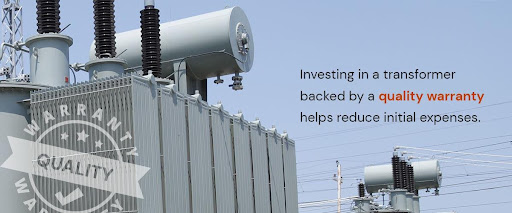
A good warranty can balance out a high-cost transformer. Manufacturer warranties provide ongoing support, reducing your early repair costs. Service agreements can cover preventive maintenance and emergency assistance, minimizing downtime. Investing in a transformer backed by a quality warranty helps reduce initial expenses. Sunbelt Solomon offers BABA-compliant remanufactured equipment that is as good as – or better than – new, with enhanced warranties, shorter lead times, and cost savings.
-
Lead Times
If you’re replacing critical equipment or need an emergency solution, buying a new transformer can cause extended downtime. Make sure to research stock levels, custom builds and rental options before buying your next transformer.
Stock Solutions
Stock transformers are ready for immediate shipment. While custom models take much longer, they’re better suited to specific demands. Those taking on projects with tight deadlines should look to stock solutions to meet their power needs.
However, stock equipment might lack the voltage, phase or cooling specifications you need. In that case, consider researching custom transformers, such as the ones we build at Sunbelt Solomon through our dedicated engineering teams.
Emergency Replacements
Unexpected transformer failures can bring your operation to a halt. In these moments, fast replacement is critical. Invest in backup on-site transformers to prevent downtime. If that’s not possible, look for reliable rental transformers from trusted providers, like Sunbelt Solomon. Rental solutions give you quick access to transformers wherever you’re located. Use these solutions to keep your business running.
Supply Chain Delays
Large-scale projects mean detailed logistics planning. Transformer delivery must align with your installation schedules. Everything from supplier reliability to global logistics can impact timelines. Make sure you’re partnering with a provider that offers a broad inventory and additional transformer solutions. Working with Sunbelt Solomon, a one-stop shop, cuts out delays and mix-ups, keeping your transformer installation on track.
-
Reliable Suppliers
Where you get your transformer from matters just as much as the transformers you purchase. A reliable supplier backs their stock with quality guarantees and support. In industries focused on safety and efficiency, reputation matters. Sunbelt Solomon has an established track record of providing high-quality transformers.
What is the supplier’s service history? Do they have a long history of turnkey solutions? Explore customer reviews and case studies to get a full picture of who you’re buying from.
Customer Support and Field Service
The relationship with a supplier doesn’t end with your transformer purchase. Suppliers should offer equipment procurement tips and support even after you invest in a transformer. Ongoing maintenance and technical support are essential for preventing downtime. If you experience a transformer issue, the supplier should have service centers, emergency services and dedicated customer support.
Access to transformer replacement parts is also important. When transformers need repairing, having replacement parts gets you up and running faster. Choose a supplier with a strong network and a responsive service team to keep your operation running smoothly.

Transformer Solutions From Sunbelt Solomon
When it comes to transformers, reliability and efficiency make all the difference. Whatever your needs, Sunbelt Solomon can help. We provide end-to-end transformer solutions, from sales and recycling to maintenance, repair and rentals. With a wide inventory of different types of transformers for purchase or rental, we’re sure to have what you need.
As North America’s premier full-service transformer provider, we deliver faster lead times, unmatched service and sustainable solutions. Our expansive inventory and nationwide service network mean you get the right equipment when you need it. Plus, with our field service experts, you get more than a transformer — we’re here to provide in-service and in-field support for our customers.
Looking for the right transformer for your operation? Fill out our contact form, and let us build your trusted power solution.
